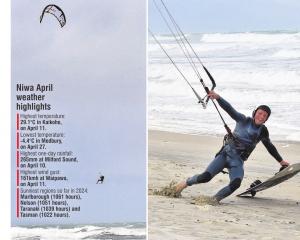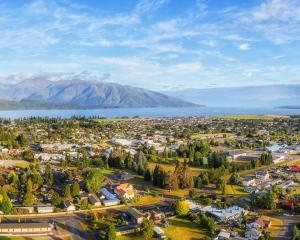
Queenstown climate scientist Dr Jim Salinger says heatwaves are very likely on the way.
Because of the atmospheric and oceanic conditions, Dr Salinger said he was about 75% confident this summer would be the type that drove temperatures up in Central Otago: with air temperatures that pushed along grapes and fruit crops, or ocean temperatures that led to snapper catches in Fiordland as fish moved around the coast.
"All the ingredients of the atmospheric stew are there for it," the adjunct research fellow at the School of Geography, Environmental and Earth Sciences, at Victoria University, of Wellington, said.
Sea temperatures were pushing the atmosphere into a La Nina phase and big highs had already crossed the South.
The southern annular mode was positive, which would indicate dry settled weather over New Zealand this summer.
Another factor, the tripolar index, a comparison of different ocean temperatures in different parts of the Pacific Ocean, was negative.
This encouraged the southwest part of the Pacific into warmer sea surface temperatures, he said.
There would still be incursions of cold air over the coming months, particularly in the South, but all the indicators added up to "a heatwave summer", Dr Salinger said.
Temperatures were manageable during heatwaves in New Zealand, but particularly in inland Otago there could be sizzling days ahead.
Dr Salinger expected the north and east of the North Island to be wetter, but in southern parts the indicators — and global warming — pointed to drier conditions.
Niwa National Climate Centre meteorologist Ben Noll said while the United States’ National Oceanic and Atmospheric Administration had already declared a La Nina season, Niwa had a slightly different threshold that was not currently met, "although, it’s close".
in summer, there was a link between warm ocean temperatures and the corresponding air temperatures.
Ocean temperatures in a wide region over a five-day period above the 90th percentile for that time of year were often considered the threshold for a marine heatwave.
Last week, ocean temperatures across the eastern South Island were about 1degC above average for the time of year, he said.
Those temperatures put Otago’s coastal waters in the 70th to 80th percentile for the time of year.
Coastal temperatures were expected to stay warm, he said.
The climate drivers Dr Salinger was referring to were similar to those that created the summer of 2017-18, which was quite a hot summer across Otago, Mr Noll said.
"And January 2018 was New Zealand’s warmest month overall on record," he said.
"That was quite a memorable summer - it was the most recent one that had La Nina conditions."
And while no two summers were the same, and he would not predict a copy of any previous summer, there were some similarities with indicators ahead of the summer of 2017-18 with the one coming up.
"Once again with the background warming that is human-induced, these types of summers are going to be more common — and hotter and more humid weather is going to be more common - with time," Mr Noll said.












